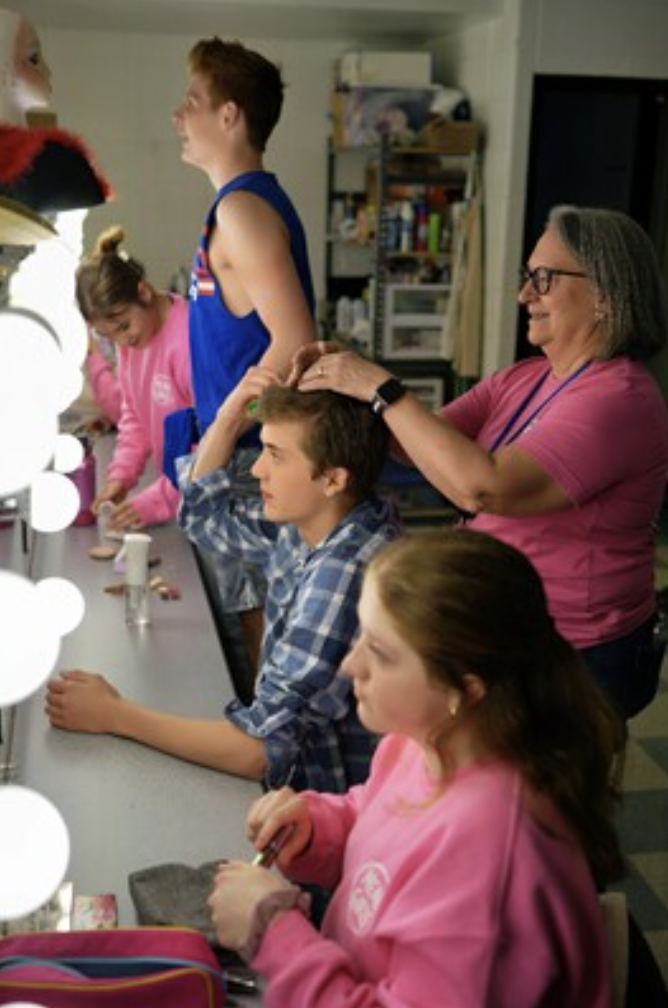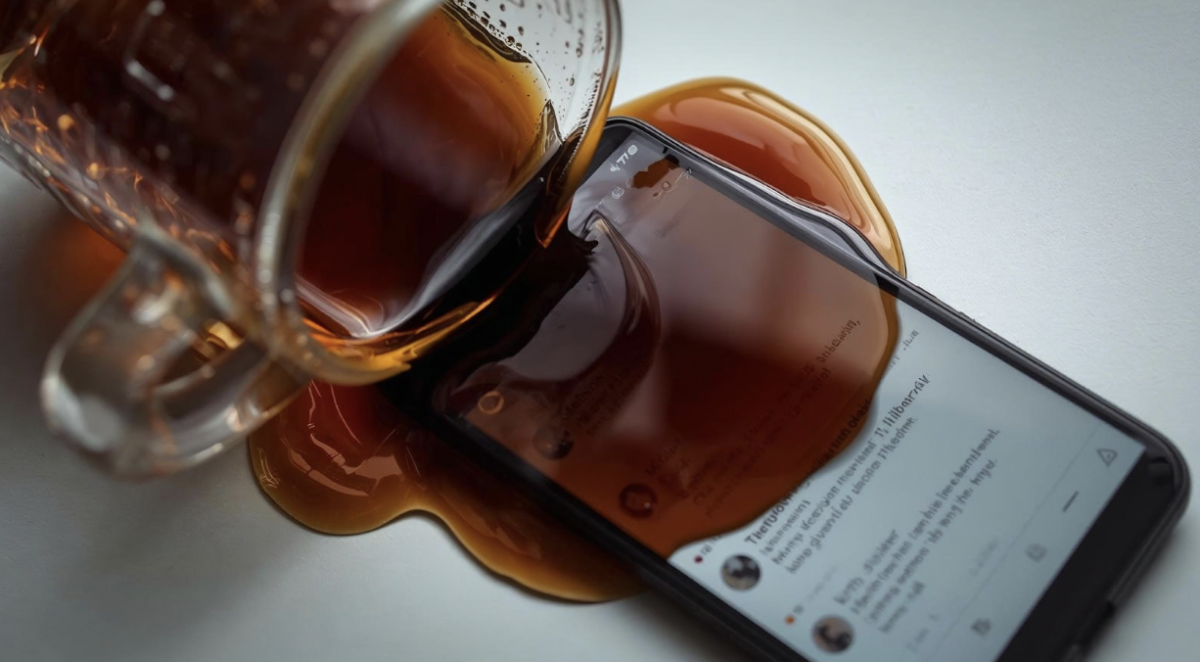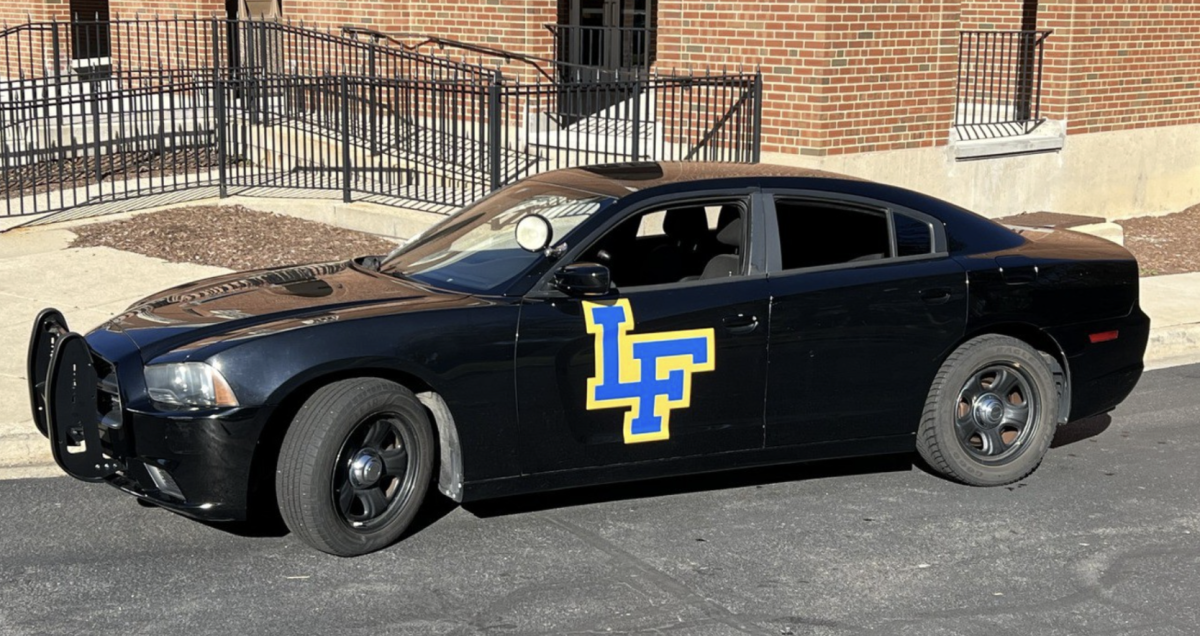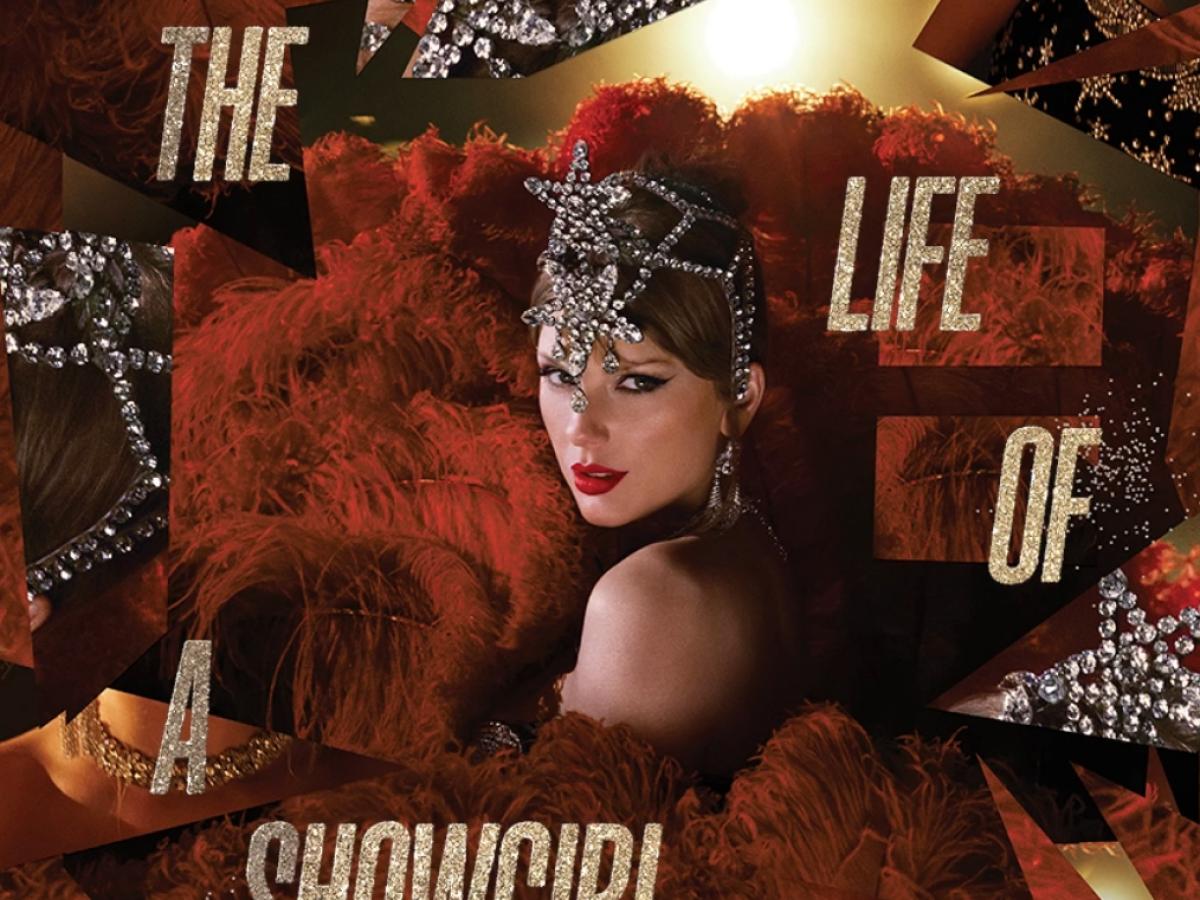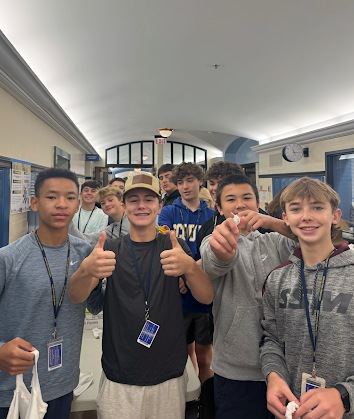The curtain rises, the lights go up, and an actor steps on the stage. The first glimpse of the character, and impression of the show, falls on the very thing holding the performance together — the costumes.
“Costumes bring the characters to life and really helps visualize the story,” sophomore Nico Caputo said. “The costumes force you to travel to the setting and embrace the magic.”
LFHS relies on one key person to help create that “magic.” While many know her as the junior
study hall proctor, Mrs. Dawn Neal, costuming is her passion and her talent. She plays an essential role in every show.
The role of the costume designer is to create a character costume plot, mapping out what each character should wear in every scene. Then, once getting the costumes, the costume designer tailors each and every one to fit the actor, repairing and altering costumes throughout the process.
Neal didn’t always know that she would end up in costume design. She was raised in Libertyville and was initially drawn to the acting side of theater.
“My mom was a sewing teacher at Carmel, so I was able to help with costumes,” Neal said. “We used to help make our costumes in high school, so it just happened naturally. The acting auditions were too nerve wracking, and I found the costuming really fun, so I wanted to concentrate on that.”
Neal went on to graduate in 1982 with a costume design degree from Ripon College and started her Master’s degree at University of Denver in the same subject. She’s been designing professionally since 1984, but began designing for LFHS in 2008 in her first show “South Pacific.”
As a veteran costume designer, Neal has her process perfected.

Photo Courtesy of Sarah Noble
“When I first get the script, I just read it and don’t think about it. Then I read it again and take notes about anything in it that has to do with costuming or time period,” Neal said. “After that I start writing up a costume plot by character. Then, I start thinking about what we have in stock and when we need to buy.”
The next step in the process is to get the costumes approved by the directors. Without great costumes, the show can fall flat.
“I meet with the directors several times throughout the designing process to make sure I’m on the right track,” Neal said. “Some directors are super specific about what they want and need to see everything to make sure it fits in their vision, and some directors just trust me to pull it together.”
This relationship between the director and the costume designer is essential to creating a functioning show. Director Mrs. Sara Dreiling says Neal is a “delightful experience.”
“On one hand, she’s an incredible costumer. On the other hand, she’s an amazing artist as well. I appreciate her organization and artistry. She’s also just a really fun person to work with,” Dreiling said.
It’s also important to create a solid relationship with the actors.
“It is so incredibly easy to work with Mrs. Neal. She just knows how to do everything perfectly,” senior Millie Foley said. “She knows exactly what will work and if it only doesn’t work, she fixes it right away.”
The work Neal does doesn’t just happen before the show, but is needed throughout the entire run. The main roles of the costume designer after the initial designing are the quick changes and the cleanup.
Quick changes are when an actor needs to get into another costume, but doesn’t have enough time to leisurely change. The costume designer helps this transition move seamlessly.
“The cleanup is not the fun part. Everything has to be laundered and clean,” Neal said. “Then, it gets restocked in the right spot. But, I love the whole gig.”
Come see “Babette’s Feast” Jan. 30-Feb. 1 in the Little Theater and watch Neal’s costumes in action.

